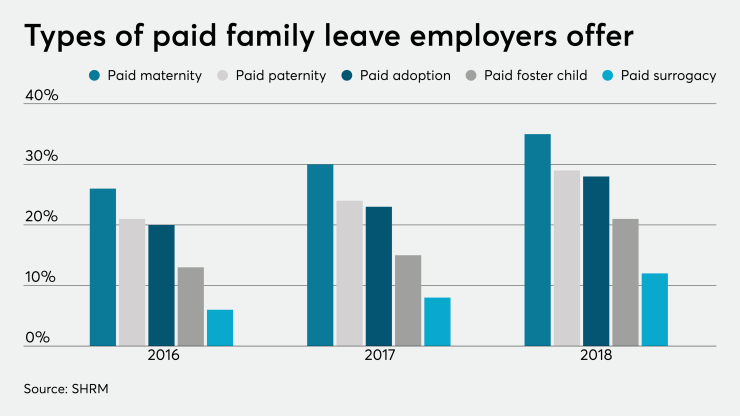WASHINGTON — Paid family leave has been a hot topic. From Capitol Hill to company board rooms, employees have increasingly been calling on employers to offer more time to bond with newborns.
That’s why Halliburton decided to improve their family-friendly benefits by boosting paid leave following the birth or adoption of a child.
“While we weren’t the first to come up with and offer this benefit, it was innovative and new within our industry,” Jennifer Mericle, manager of global benefits at Halliburton, said Tuesday, speaking at the Disability Management Employer Coalition’s annual conference.
The oil and gas provider’s benefit gives workers eight weeks of fully paid bonding leave, or a two-week payout in lieu of the leave, Mericle said. Prior to this, the employer only offered eight weeks of maternity leave. Employees who receive overtime bonuses could see a pay cut when using the benefit, so the company decided to include a two-week payout as well, she said.
“We wanted something that resonated broadly with our employees,” Mericle added.
See also:
Data shows employers are increasingly investing in family-friendly benefits. Paid maternity leave policies jumped nine percentage points to 35% between 2016 and 2018, according to data from the Society for Human Resource Management. Paternity leave saw a jump of eight percentage points over the same two year period, SHRM reports.
Employers across the country have been beefing their paid leave policies in the war for talent. Companies including
Halliburton employees have 12 months from the date of childbirth or finalized adoption to fully utilize the eight weeks of leave. The time off can be used consecutively or broken up into increments throughout the following 12 months. Since offering the benefit, the bonding leave has been the preferred benefit, with the majority of employees preferring to take time off instead of the payout.
To really make the case in beefing up the benefit, Mericle said she got the company CHRO on board as the program champion, which helped build support for the change.
“We wanted this to be more than a program,” she said. “We wanted it to be a culture change for us.”
See also:
But not everyone was excited when the announcement came out. Operations leaders were concerned that multiple people would want to take leave at the same time, she noted.
“They were legitimate concerns we had to take in and figure out what to do,” she said.
Provisions were added where managers had to approve the paid bonding leave, and blackout dates were added to avoid impacting highly requested time-off periods, such as around the holidays.
Program communication and education were also key, she said. The company sent an email to employees and a postcard, both of which outlined the program. It also published business practices, wrote FAQs and training documents.
Mericle said it was a “privilege” to bring the benefit to workers. The new paid family leave policy demonstrated a shift in Halliburton’s company culture, she said.
“We say we’re family friendly, are we really?” she added. “I feel we made that leap. The use of the paid bonding leave shows the acceptance, and support to be with their family.”






